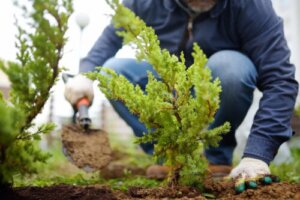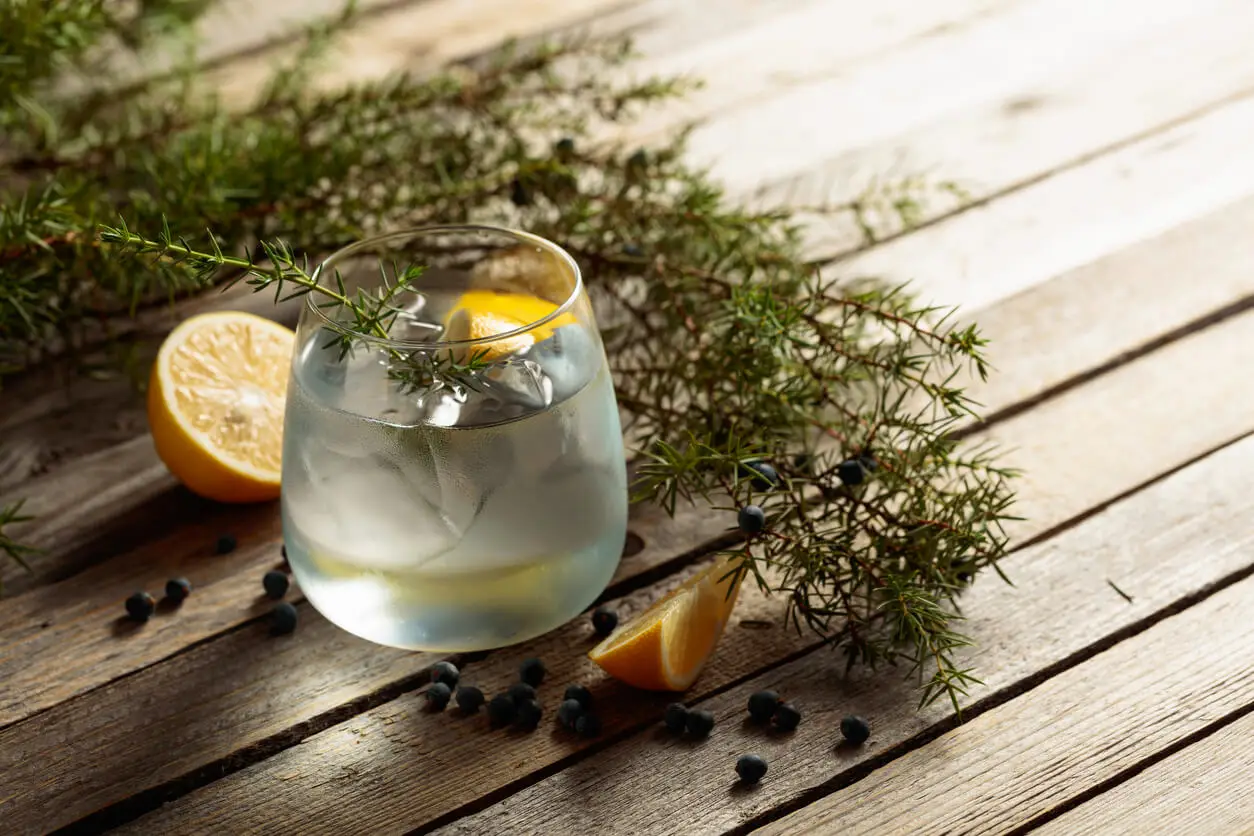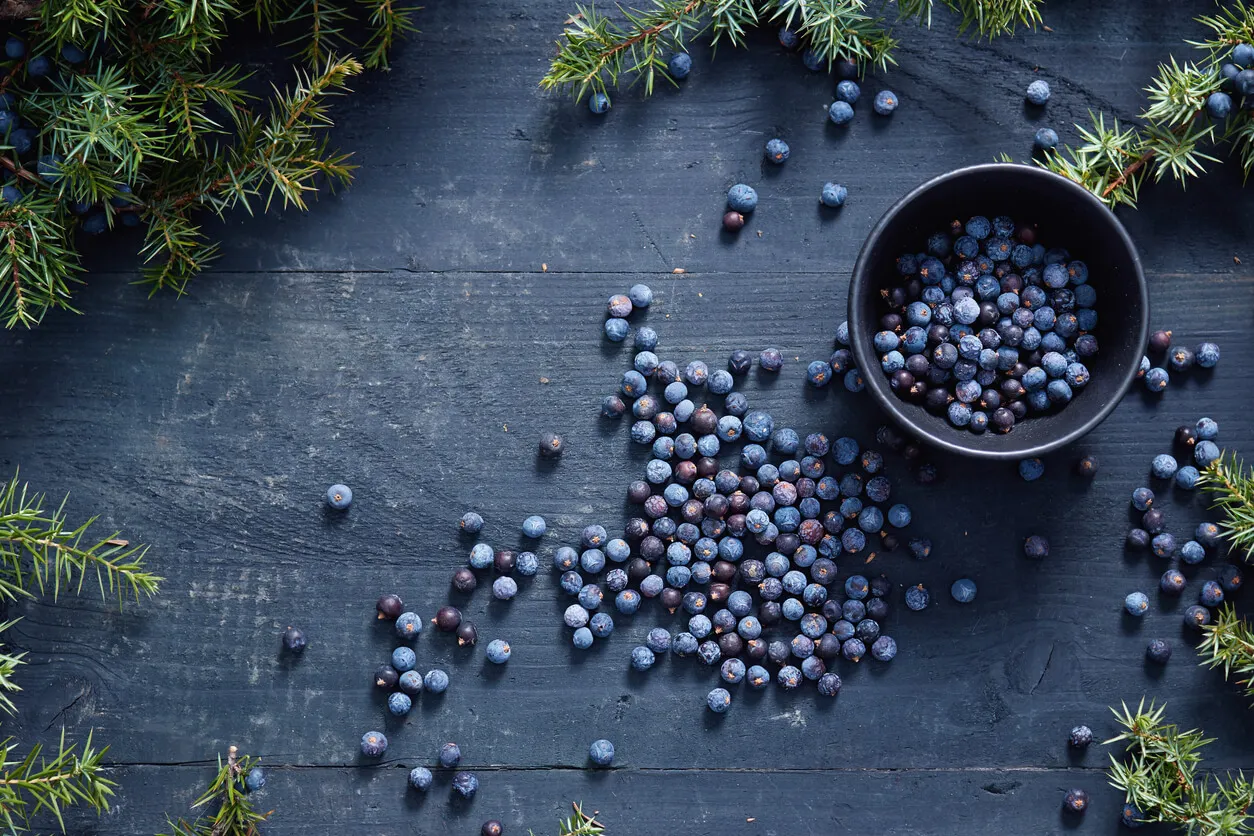7 Keys to Juniper Cultivation

Juniper cultivation has become popular because the fruit serves as an ingredient in the preparation of gin. In addition, it is an easily adapted vegetable with a decorative appearance and medicinal properties.
The appearance is similar to cypress and does not require rigorous pruning to emphasize the coniferous form. The species lends a wild touch to gardens; it even lends itself to bird nesting.
Want some more information about this lovely plant? Continue reading!
What’s juniper and what are its characteristics?
Research indicates that the common juniper, belonging to the species Juniperus communis L., comprises several subspecies or varieties, differentiated by the shape of the crown: oval, erect, or stunted.
The shrub of European origin measures 1 to 2 meters, its evergreen leaves resemble a needle and the texture is pinnate. The blue and violet berries it produces are useful in the preparation of beverages, which provides penetrating aromas and a mixture of bitter flavors with sweet notes.
The plant is dioecious – that is, there are males and females. The latter are the ones that bloom in spring. The condition to obtain the product is to plant both genders, since the male ones provide the pollen to the female flowers.
A juniper tolerates any climate and integrates into all soils, so it’s not unreasonable to find crops in grasslands, scrublands, coasts, and mountains. They even grow without problems in urban areas.
Other names for this plant are “jabino”, “arándano de nebrera”, “gorbizo”, “gorbicio” and “ajarje”.

The benefits of juniper cultivation
This species is attributed to medicinal properties. In fact, it’s often used as a component of natural remedies against cystitis, kidney stones, and urethritis. In external application, it is associated with the treatment of arthritis, muscular pains, and mycosis.
The fruit contains vitamin C, monoterpenes, and antioxidants. It also acts as a diuretic and antiseptic; in any case, specialist approval is required for medication with the herb.
In the culinary field, it works as a flavoring agent for sauces and meats. On the other hand, the ornamental qualities of its branches and trunks stand out in the beautification of the garden. But it’s the wood it offers that, although little, can be used to build decorative boxes and containers.
Do you like this article? Find out more: The 6 Best Medicinal Plants with Scientific Proof
The keys for growing juniper
The main advice for a good juniper crop is that the soil is well drained. The rest of the recommendations are presented below.
1. Plant without leaving air pockets
As with other coniferous plants, grow junipers in autumn. This is the season that favors shrub development.
Dig a deep hole and insert the plant, ensuring that the neck of the stem is flush with the bottom of the hole. The same soil that you set aside while digging is what you will use to fill the hole.
While you put the mud together, press down to deflate any possible air pockets. Finally, water the planting and, if required, put a little extra soil.
2. Check the soil
Although they flourish in different soils, they do better in those of limestone type, whose pH is greater than 7. The crop should not be overwatered, because it would end up waterlogged, especially if the soil is clayey.
These plants tend to grow slowly, but if you provide regulated doses of fertilizers and botanical supplements of magnesium, you help the development. In addition, you prevent the leaves from changing their green hue to a dull one.
3. Fertilize with care
Granular fertilizers containing phosphorus, nitrogen, and potassium promote plant development. The suggested amount is between 100 and 200 grams, given once a month until winter arrives. The fertilizer should be applied around the stem.
4. Reproduce the plant by sprouting from the stem
The reproduction of Juniperus communis L. is by cuttings. Cut stems of about 10 centimeters or less, soak them for 2 days, and then take them to the pot.
To plant them, prepare the substrate with perlite and peat. If you want, you can add a mixture of water and rooting hormones.
Although it’s also possible to plant seeds, the procedure is more difficult. It requires stratification of the seed to germinate.
5. Regulate irrigation
Juniper crops resist drought perfectly, so do not over-irrigate. When they receive too much water, the crop runs the risk of becoming infected with Phytophthora-type molds.
The general recommendation is to water them a couple of times a week in spring and summer. In autumn, watering is once a week; in the winter, wet the bush once every 2 weeks and if there is a lot of rain do not water it.
6. Locate where it gets good sunlight
Try to place the plant in an area that guarantees sunlight. Do not be afraid of damaging it. This species tolerates very cold temperatures and the hottest climates.

7. Prune your juniper plant properly
Prune with garden shears or hedge trimmers. Try to even out the height, while giving the shrub the design you desire.
The website Gardener’s Path suggests not over-pruning and focusing on the top shoots, to help the growth and shape of the lateral buds. Likewise, it is recommended to remove dense branches for better ventilation and light permeability.
We think you may also enjoy reading this article: How to Prepare Your Garden for Summer
What to do if the juniper crop becomes diseased?
According to a publication (all in Spanish) by the Agriculture Council of the Generalitat Valenciana, a juniper specimen could decay due to viruses, bacteria, fungi, and parasitic phanerogams. The symptoms are brown leaves and dryness; these alterations result once the condition advances through the ducts through which the sap should circulate.
Lack or excess of salts, mechanical damage, and toxic substances are other causes of crop damage. The cure is to remove the affected parts or use a pesticide when the disease is caused by pests.
If you see caterpillars on the branches, make sure to remove them. Also, if you find eggs or larvae, cut and burn the branches, in addition to spraying the bush with the insect remedy.
All cited sources were thoroughly reviewed by our team to ensure their quality, reliability, currency, and validity. The bibliography of this article was considered reliable and of academic or scientific accuracy.
- Enebro común (Juniperus communis). Guía de cuidados. Picture This. https://www.picturethisai.com/es/care/Juniperus_communis.html#Cultivation:SunlightDetail
- Enebro. Juniperus communis L. IQB. Medciclopedia. https://www.minsal.cl/portal/url/item/7d98ad06d32d83d5e04001011f016dbb.pdf
- Gómez Paso A, Paül V. Taxonomía, corología y dinámica del matorral de enebro rastrero en dos localidades extremas: los macizos de Trevinca (Galicia/León) y del Montseny (Cataluña). Congreso Iberoamericano de Biogeografía. España; 2020. https://www.researchgate.net/profile/Valeria-Pauel/publication/343112666_Taxonomia_corologia_y_dinamica_del_matorral_de_enebro_rastrero_en_dos_localidades_extremas_los_macizos_de_Trevinca_GaliciaLeon_y_del_Montseny_Cataluna/links/5f17845c45851515ef3e2bde/Taxonomia-corologia-y-dinamica-del-matorral-de-enebro-rastrero-en-dos-localidades-extremas-los-macizos-de-Trevinca-Galicia-Leon-y-del-Montseny-Cataluna.pdf
- Principales enfermedades y fisiopatías detectadas. Generalitat Valenciana. Consejería de Agricultura. España; 2010. https://agroambient.gva.es/va/web/medio-natural/principales-enfermedades-y-fisiopatias-detectadas-70866
- ¿Qué es Phytophphora? Universidad Estatal de Oregón. Estados Unidos. https://agsci.oregonstate.edu/osu-nursery-greenhouse-and-christmas-trees/%C2%BFqu%C3%A9-es-phytophthora
This text is provided for informational purposes only and does not replace consultation with a professional. If in doubt, consult your specialist.








